How We Plug In
The Electricity
Grand Challenge
If you only have brain space for three things
A zero-carbon world won’t be one where people use less electricity, but more. Most experts agree that the world will need to triple the amount of electricity we use by 2050. The world is making progress generating this electricity cleanly, but that’s meaningless if we can’t move it or store it efficiently and affordably.
What about nuclear power? Fusion is an innovation on par with the industrial revolution or the discovery of fire. But if we wait for fusion, it may be too late. We have to have a baseload power to rely on, and fission is the best-understood zero-carbon option available.
Going forward, the technology is in decent shape, though prices need to come down to incentivize adoption. But we need to rebuild (or build outright) all our electricity grids — and permitting, siting, and general NIMBYism remain significant policy hurdles to that.
Electrify
Everything
1
1
In the early 2000s, the public conversation around climate change often boiled down to a footprint. Conventional wisdom — and several handy calculators and quizzes — told us that we needed to reduce our carbon footprint by using less electricity.
They got the first part right. We do need to reduce our carbon footprint to net zero. But over the last decade, experts have developed a new, counterintuitive understanding of how to get there:
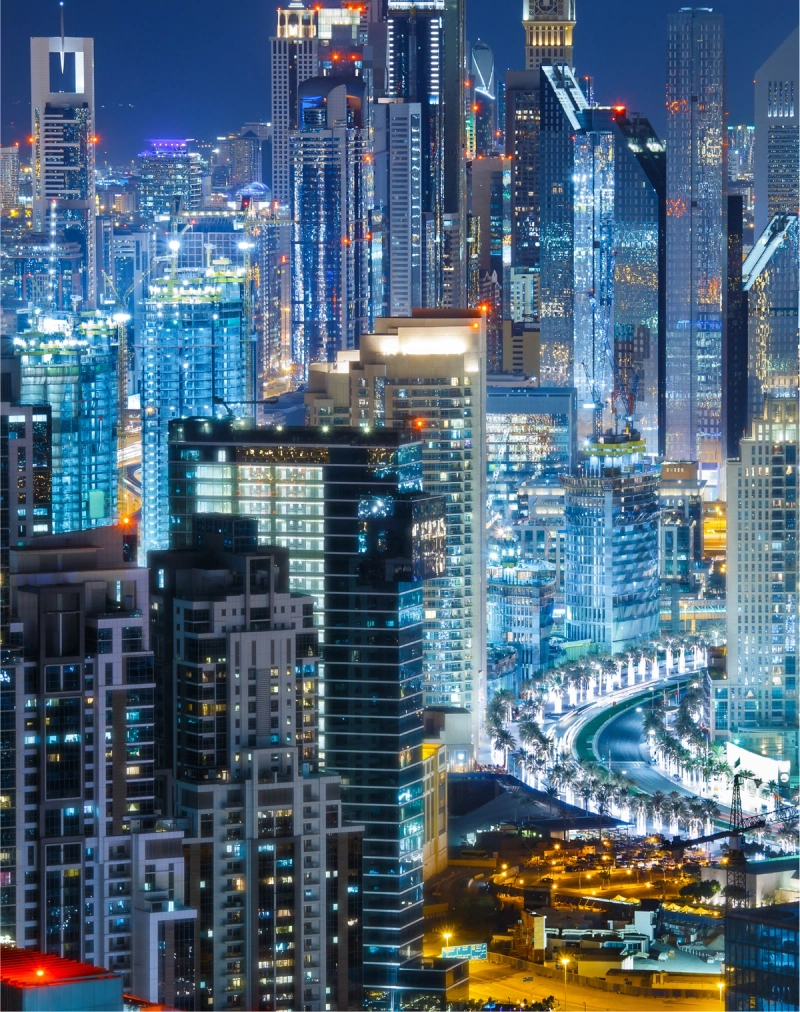
Major city lit up at night
We don’t sacrifice our use of electricity.
We expand it.
Here’s why: When you run your air conditioner or heat your oven, that usually burns carbon because most homes are connected to a power grid. At the other end of that grid is often a coal or natural gas plant.
Today, those plants account for about a quarter of all emissions globally. To get to net zero, the world needs to replace those carbon-emitting sources of energy with clean ones.
Coal-fired power station at night
But people also emit a ton of carbon without ever plugging into an outlet or connecting to a grid. They drive cars with internal combustion engines. They make steel using coal or heat buildings using natural gas.
We’ll talk about these emissions sources in the following pages, but what they have in common is that often, the best way to decarbonize them is with zero-carbon electricity : replacing your gas-powered car with one that plugs into the wall, for example.
That’s why even though carbon-based electricity accounts for about a quarter of all emissions, carbon-free electricity amounts to more than a quarter of the solution . The world has roughly 8,000 gigawatts of installed electricity capacity. It’s not just a matter of making sure all 8,000 are produced with wind, or solar, or nuclear. It’s a matter of building another 20,000-30,000 carbon-free gigawatts so we can reduce emissions in other areas.

Aerial view of a solar power plant in the countryside
Estimates suggest that electricity demand could triple by 2050 in order to reach net zero.
2050
Demand will also continue to increase as emerging markets become wealthier. A society’s wealth directly correlates to how much energy it has access to . And all nations should be as prosperous as they can be.
We’ll never build a coalition to fight climate change if the implicit message is that people have to stay poor.
Aerial view of electric towers in green fields
The good news: Of all the grand challenges, the most progress has arguably been made in electricity, propelled by low-cost and widely available clean energy and batteries.
Of course, generating energy and delivering electricity are two different problems. We’ve gotten a lot better at generating clean electricity over the past decade. Figuring out how to deliver and store it for later use has been a little tougher.
The big challenges with delivery are storage and transmission . How do we get clean electricity to people when and where they need it?
Array of solar panels in Nevadan desert
With fossil fuels, it’s easy. You transport coal or natural gas to a power plant, convert it to electricity, and then send the electricity along power lines to the homes and cities that need it.
Solar and wind power don’t work that way. The sunniest and windiest places aren’t the only ones that need electricity, and they’re not usually near big cities either. Plus, you can’t exactly ship sunlight or wind in a railcar or a pipeline.
Storing and transmitting clean electricity will require big, modernized, and interconnected electric grids. Right now, those don’t exist. In some countries, the grids are too small, old, and fragmented — in other countries, they don’t have grids at all.
We’ll get to all of these issues in the sections below. But let’s start at the beginning of the electricity process: Where do we get the energy?
Renewables
The Winds —
and Rays —
of Change
2
2
Since Breakthrough Energy was founded eight years ago, the proliferation of wind and solar power has been astonishing.
Last year alone, the world deployed 280 gigawatts of renewables —about 23 times the electricity consumption of New York City. And as we’ve gotten more efficient at producing them, these sources have also become more affordable. Solar cells were 10 times cheaper in 2020 than in 2010.

An illustration of four offshore wind turbines
We’ve also seen growth and innovation in geothermal and hydropower. In fact, hydropower is the biggest source of renewable energy in the United States — and new technologies
are creating ways to access it in different circumstances than the traditional large-scale dams we're used to.
And if we can find a cost-effective way to tap into Earth’s vast reserves of deep geothermal heat, we have a huge opportunity to provide large amounts of zero-carbon power: experts estimate more than 1,000 gigawatts are readily available in the United States alone.
For example, Fervo
, a Breakthrough Energy Ventures company, uses new drilling technologies to drill horizontally
into geothermal reservoirs. Not only does this open up new, untapped reservoirs of power, but it also lowers our carbon footprint by allowing us to drill multiple wells from the same location.
But it’s still not enough — especially given the ongoing challenges, including that nearly half of the wells dug for geothermal power turn out to be duds.

A motion-blurred photo of office buildings in a business district
Most people — even those who run big utility companies — haven’t fully grasped just how much energy we actually need. It’s a huge amount. In order to meet the 2050 net-zero goals, the International Energy Agency (IEA) estimates that we will need to start deploying renewable energy at least three times faster.
Right now renewables are scaling rapidly to meet that challenge. And several companies are working to accelerate the pace and address the cost and logistical hurdles that renewable energy generation faces.
For example, Aikido , a company led by three Breakthrough Energy Fellows , is developing a self-upending, semi-submersible platform designed specifically for floating, offshore wind turbines. It can fold up so the turbine and the platform can fit through relatively small spaces and unfold like a fan when it reaches its target spot in the ocean.
3X
The bigger issue with renewables, though, is intermittency. People need electricity on demand even when the wind doesn’t blow or the sun doesn’t shine. But what if the grid wasn’t dependent on the weather?
The most efficient way to handle the intermittency challenge is through a combination of storage and transmission. These two solutions would allow us to move electricity through time and space. Let’s start with storage.
Storage
Energy When
We Need It
3
3
Generally, when you make electricity from solar and wind power, you get it when they give it, unless you can store it for another time. That’s why storage — one of the biggest challenges the world faces in the energy transition — has been such a significant area of investment for Breakthrough Energy and innovators throughout climate tech. It’s central to building a clean and reliable grid. And it is key to fulfilling the promise of renewable energy — ensuring that it can be stored so that it’s available on demand.

Antora Energy's thermophotovoltaic cell
In the short term, the best way we have to store this electricity is through batteries. While this technology has improved in recent years, it is still incredibly expensive.
Researchers are continuing to work on ways to extend their duration and make them more cost effective. But some of the most exciting developments we’ve seen have come in long-duration energy storage (LDES) technologies.

A battery built by Form Energy
A holy grail for LDES would be hydrogen. As Bill wrote in this report’s foreword, hydrogen could be a key way to store renewable energy that powers cities where the sun isn’t shining or the wind isn’t blowing. That’s because hydrogen is the key ingredient in fuel cell batteries, and these batteries, unlike wind or sunlight, can be boxed up and shipped and stored for years before they’re converted back into energy.
The challenge is cost. It’s expensive to manufacture hydrogen without emitting carbon dioxide (CO₂). Fortunately there are other ways of producing LDES technologies — mechanical, thermal, chemical, and electrochemical methods that can operate for at least 10 hours.
100hrs
One promising company is Malta , which takes electricity from the grid and converts it with a heat pump to thermal energy by creating a temperature difference. The heat produced by this process is stored in molten salt, while the cold is stored in a chilled liquid antifreeze coolant. When the grid needs power, the temperature difference is converted back into electrical energy by a heat engine.
Form Energy has come up with another method. Founded by the former head of Tesla’s stationary energy storage program, it stores electricity for up to 100 hours in what’s known as an iron-air battery that converts iron into rust and then reverses the process on demand.
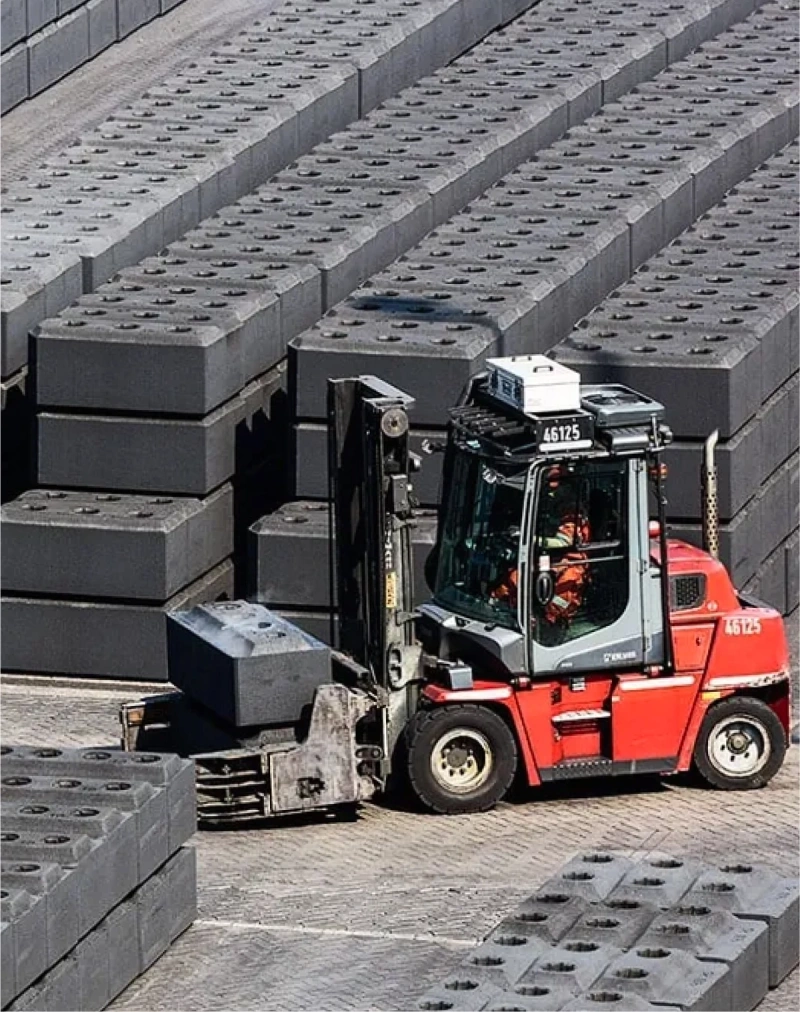
Forklift moving carbon blocks
In addition to storing electricity for a longer period of time, LDES could also enable the decarbonization of other sectors, such as industrial heating processes. Antora is working on exactly that, storing renewable electricity from sources like wind and solar as heat in solid carbon blocks.
These are just some
of the innovative companies working to solve the storage problem. But we also have to focus on scaling and deploying these technologies.
Scaling LDES presents several challenges. Most LDES manufacturers are either startups or newly-public companies with limited experience in large-scale production. It’s also hard to monetize these technologies, as most markets prioritize shorter duration storage.
What’s more, there’s no clear standard for defining LDES or measuring its performance. And since lithium-ion batteries already dominate the energy storage market, it could restrict the need for LDES, especially for storage needs below eight hours. The low market penetration of renewables presents another limitation, as LDES only becomes essential if and when renewable sources represent the majority of the energy mix.
For long-duration energy storage to be deployed at scale, the market must recognize and compensate for the unique benefits these technologies provide, such as supplying power during peak demand or maintaining grid stability during periods of high variability.
LDES is pivotal for the decarbonization of the US and international power grids. And moving forward, governments need to enact more policies that catalyze the deployment of LDES and create demand.
Transmission
Energy Where
We Need It
4
4
So, we’ve discussed storing energy. But how do we move it?
Let’s use the United States as a case study. Last summer, the United States Congress passed the Inflation Reduction Act , investing billions in clean energy and taking a historic step towards building the economy needed to meet the goal of decarbonizing the power sector by 2035.

The flow of electricity
But there’s a problem: The United States’ power grid isn’t ready for it. Right now, the United States’ outdated power grid is creating a bottleneck effect—they have the energy, but it has nowhere to go.
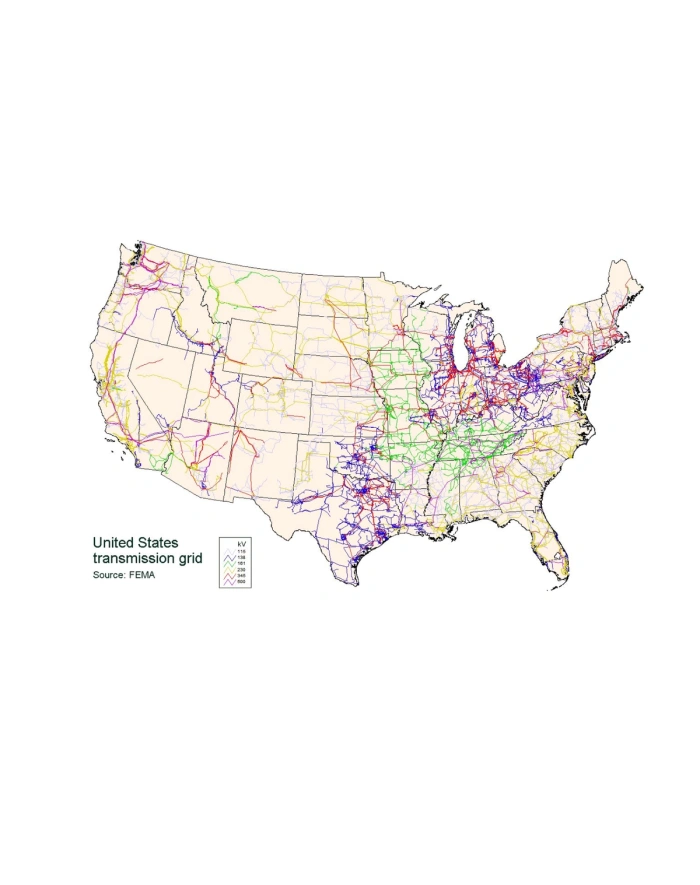
A transmission grid of the United States
In fact, 80% of the IRA’s emissions reductions will go unrealized if the United States doesn’t increase its grid’s transmission capacity by over 60% by 2030 — and at least double or triple it by 2050.
Most of the power lines you see today in the United States were built between the 1950s and the 1970s. In terms of electricity infrastructure, it’s downright ancient, and these power lines were only meant to last 50 years in the first place.
In fact, the United States doesn’t really have one grid, but a messy patchwork of many grids, which makes it essentially impossible to send electricity beyond the region where it’s made. It’s also fairly dumb. Systems don’t talk to each other well and are slow to adapt to change.
The U.S. power grid wasn’t designed with a net-zero world in mind. It relies on railroads and pipelines to move fuel over long distances to centralized power plants, where that fuel is turned into electricity and transmitted over short distances to the cities that need it. This system doesn’t work for wind and solar, which are intermittent and often far from where people live.
80%
That’s why the United States needs to upgrade the grid, build more high-voltage transmission lines that can carry electricity long distances, and use those transmission lines to better connect regions and communities to one another.
In other words, an interstate highway system for electricity needs to be built that can bring power to every corner of the country (on land and offshore), with the digital systems to make it smart, adaptable, and efficient.
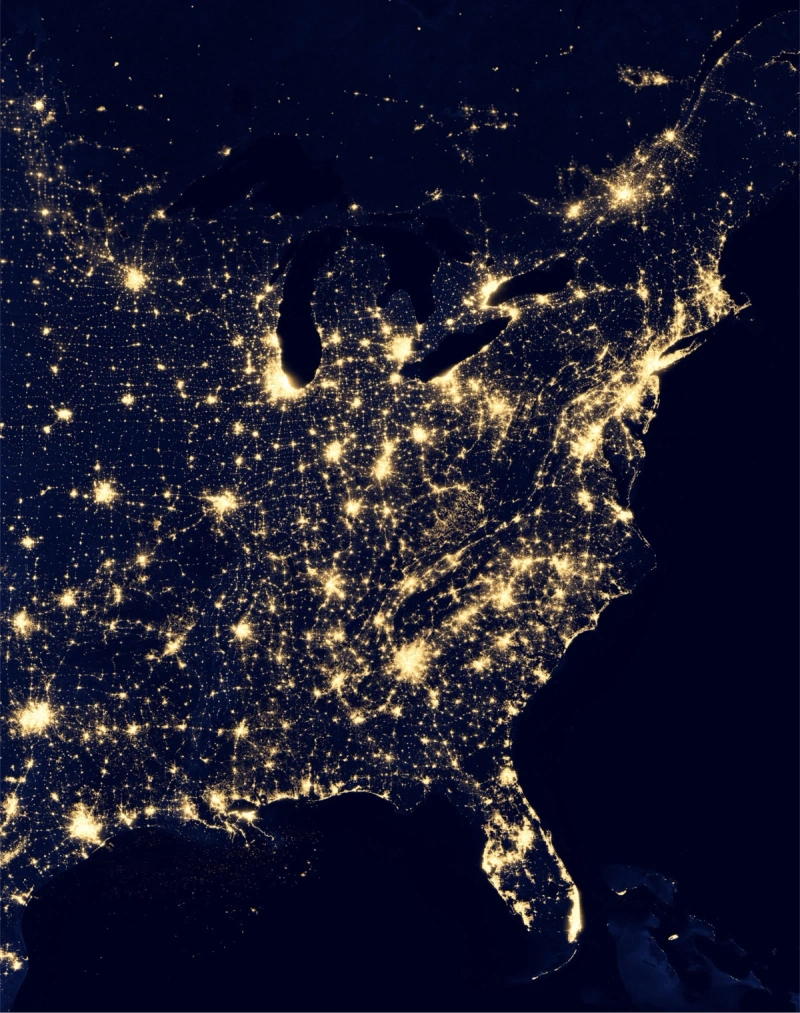
A view of the U.S. electrical power grid from space
This is no small task.
It took the United States more than a century just to build the fragmented grid it has today. And in order to reach its climate goals, the United States needs to replace the existing wires and at least double the size of that grid in less than 30 years.
Unlike a lot of the other issues we’ll discuss, transmission is primarily a policy problem , not a technological one. The technology, for the most part, already exists.
But in the United States, it’s hard to build new power lines. The current permitting process is long and convoluted. You need available, connecting parcels of land and communities that are willing to have power lines running through their parks and neighborhoods.
To put this in perspective, a transmission project carrying wind power from Wyoming to California took 18 years to fully permit. We just don’t have that kind of time.
Green and red aurora over a field with power lines
This isn’t just a U.S. problem. Grid challenges are global. From getting permits to finding connecting land, most nations are facing similar obstacles to expanding and updating their grids.
In fact, Europe presents more complicated challenges than the U.S.; instead of 50 states, you’re dealing with over 20 countries. And a third of the European Union's grids are already over 40 years old — by 2030, half will be.

An image of a neighborhood along a desert hill
The issue is even more acute in low and middle-income countries where fiscal constraints make it very difficult to connect.
Even in places like China, where companies have been able to build ultra-high voltage transmission lines faster than anywhere else, the country faces challenges making new DC lines interoperable with its regional AC grids, and balancing supply and demand to prevent blackouts and reduce electricity waste.
In regions like Sub-Saharan Africa, where half the population lacks access to electricity, the primary issues with upgrading and expanding the grid are access to capital and governance. In the interim, smaller-scale solutions such as microgrids can help expand energy access, as these places continue to develop and invest in large-scale grid infrastructure.
Although transmission is primarily a policy problem, innovation will help too. For example, what if we could take existing power lines and transmit more electricity through them ? This could help build out electricity capacity while working through the permitting process of building new transmission lines.
There’s no transition without transmission.
TS Conductor is pioneering high-efficiency conductors
Storage
Fission, Fusion,
and the Future
5
5
We need every tool at our disposal to fight climate change, because almost every energy source presents tradeoffs. We’ve talked about wind and solar, storage, geothermal, and hydropower — all critical technologies.
But we haven’t yet discussed the elephants in the room: nuclear fission and fusion.
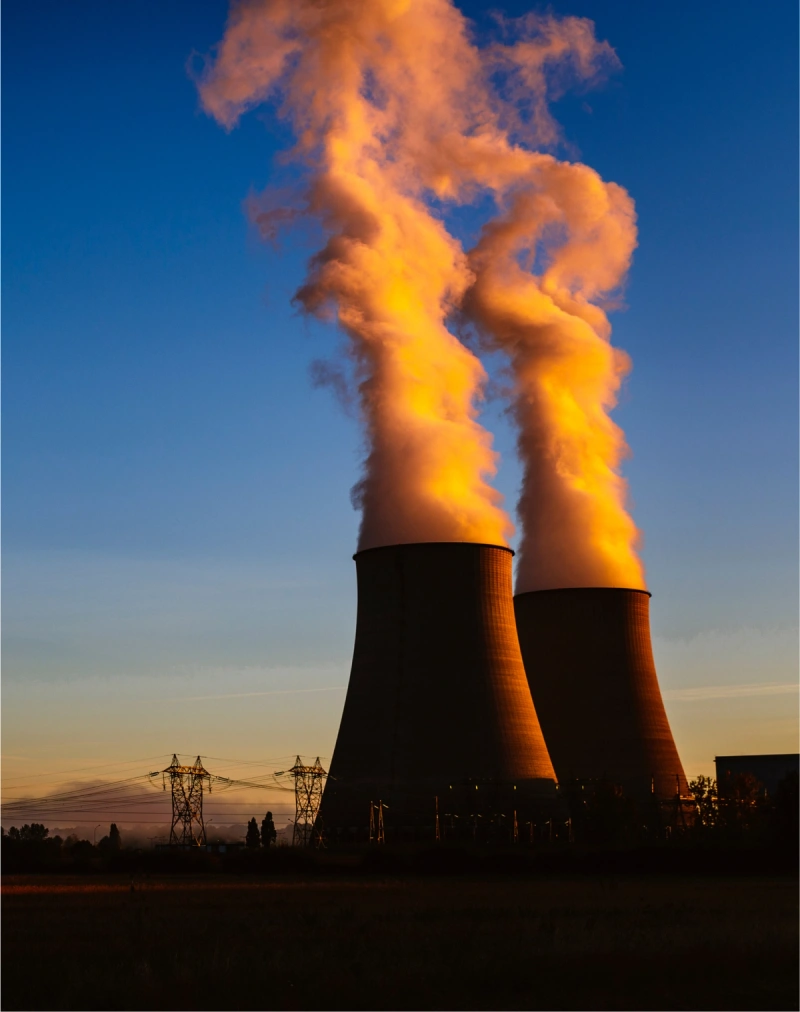
Smoke rising from a nuclear plant in France

The surface of the sun
The simple answer is they’re going to be vital, but in different ways. Fission — the one you think about when you hear the phrase “nuclear power” — is created by splitting atoms. And it's already an important source of clean energy for countries around the world. Just ask France, which currently gets 70% of its power from it, or Ontario, which gets more than 50%.
That’s because fission can deliver a lot of power with a limited footprint, day and night, all year long, anywhere on earth. No other clean energy source can reliably do that.
There are several organizations working to build next-generation fission reactors that produce far less waste and don’t pose the same risks as older reactors.
In fact, with the help of supercomputers, we can now game out digital simulations of different reactor designs to make sure we’re building the safest reactor possible. These new designs inherently prevent the kind of accidents people tend to associate with fission power. Advanced fission designs have ameliorated some of the cost concerns, too, and companies using these designs will be commercial this decade.

Inside of a NIF preamplifier support structure
There’s another “nuclear” in this story though. It’s called fusion , and it holds even greater promise than everything we’ve discussed so far.
While fission takes atoms apart, fusion pushes them together — or, fuses them. This is the same process that powers the sun, and here on Earth, scientists replicate it with lasers or by pushing plasma around inside a big magnet. If the scientists turn off the lasers or the magnets, the fusion process stops. There is no potential for a runaway chain reaction or meltdown.
Researchers have actually been doing fusion reactions since the early 1900s. But for the last century, fusion had a problem: fusion reactors always took in more energy than they put out. That is, until last year.
In December of 2022, researchers made a historic breakthrough. Scientists at Lawrence Livermore National Laboratory outside of San Francisco achieved the first fusion reaction in history to generate more energy than it took in.
The best analogy here might be Kitty Hawk — both in its importance and infancy. The Wright Brothers’ plane changed history, but it was a far cry from commercial production when it launched into the air.
That’s where fusion is today; still in the research and development stage, where it’s only done in labs, but beginning to move to the domain of real companies putting energy out into the world.

Wilbur Wright gliding down a slope in Kitty Hawk, North Carolina
So why don’t we just forget about the rest and focus on fusion?
First off, while the advancements we’ve made in fusion are astounding, there’s still a lot of uncertainty.
And second, it will be too late. The first fusion power plant will likely hit the US grid by 2030. But the technology probably won’t be ready for widespread adoption for years after that. We can’t wait that long. Fusion could have a profound, positive impact on humanity — providing energy abundance for the world over, but we’ll have to rely on other technologies to ensure that the world is still livable by the time we can make good on fusion’s promise.
Making Things Better
The manufacturing
Grand Challenge
if you only have brain space for three things
Cement and steel are the most widely used materials in the world, responsible for 10% of global greenhouse gas (GHG) emissions. But they’re actually among the lowest emissions-intensive building materials that we have today — we just use them at incredibly high volumes.
Given the challenges of replacing these materials — which are ubiquitous and have unique advantages — our main focus should be on making improvements to their process and supply chain, while also developing high performance substitutes where possible.
Going forward, there’s a lot of opportunity for technological innovation in this sector. But we also need to aggressively incentivize the use of clean steel and cement through public procurement, tax credits, demo project funding, and other methods. More funding and confidence in promising technologies can help move the needle on this notoriously hard-to-decarbonize industry.
Scroll to navigate to
next section
Click to navigate to
next section
